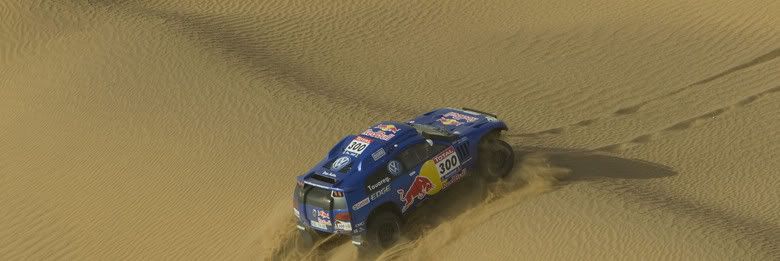
Extreme desert passages, dizzying heights in the Andes, fast gravel sections – the Dakar Rally remains the longest and toughest test in motorsport: Volkswagen is determined to bring the title home to Wolfsburg for the third consecutive time.
This is the aim for which the new Race Touareg 3 and the four proven driver pairings have been carefully prepared. Volkswagen is the only manufacturer so far to have decided the automobile classification of the desert classic in its favour with diesel technology. From 01 to 16 January 2011, which marks the third edition of the "Dakar” through Argentina and Chile, the historic 2009 and 2010 exploits are to be succeeded by another triumph with TDI power. The challenge remains an immense one: in addition to battling very powerful rally rivals, the Volkswagen squad first has to successfully master the gruelling special stages, which means beating the "Dakar” itself. But what does the 33rd edition of the Dakar Rally mean for the four driver/co-driver duos in terms of the sport? What challenges are posed to the technology? And how will the complex logistics be organised? Answers to these and other questions are provided in several press kits addressing various topics. The press kits containing information, brief interviews and facts sheets are provided by Volkswagen for downloading as part of the media countdown for the 2011 "Dakar”.
The Gruelling Atacama – the Race Touareg 3’s "playground”
Weather stations that have not recorded a single drop of rain for as long as they have been in existence, rare natural phenomena that make up the austere beauty of this area which is special in every respect. The Atacama desert is the centrepiece of the Dakar Rally, and it is the "playground” of the new Volkswagen Race Touareg 3. The 310-hp "Dakar” prototype has been designed to cross this inhospitable part of the world at racing speed. The challenges of the Atacama are wide and varied. The stone and scree desert is situated in close proximity to the Pacific coast, yet it has been the most arid area on the globe for 15 million years. It is not exactly the hottest desert in the world, but its climatic contrasts are extreme. While it appears very infertile, it is rich in natural resources, which brought great wealth to Chile in the past centuries.
